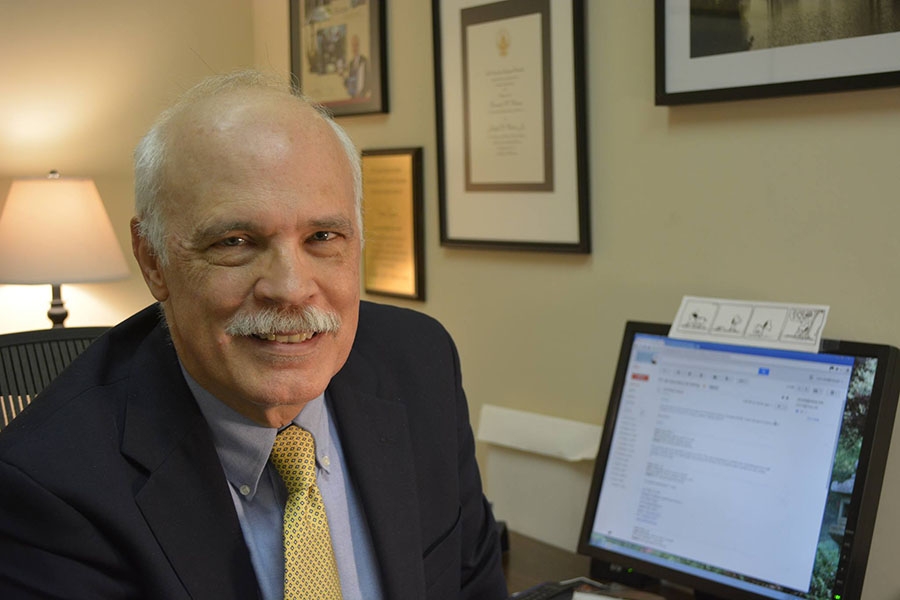Class of 2026
Journalism
By Emma Rowland, Gaylord College Class of 2026
On April 19th, 1995, an act of domestic terrorism would take place in the heart of Oklahoma City at the Aflred P. Murrah Federal Building, killing 168 innocent civilians. Countless Oklahomans were altered forever by the aftereffects. News stations from across the nation sent their reporters to cover the tragedy; right in the middle of this coverage was OU alumnus Tony Clark.
Clark graduated in 1972 with a double major in journalism and political science and earned his master's in mass communications in 1973. Post-graduation, Clark worked at KOMA radio station and was the acting news director for KWTV television. In 1984 he became the Dallas Bureau Chief at CNN, and it was in this capacity that he would cover the Oklahoma City bombing. He became a national correspondent shortly thereafter. While reporting nationally for CNN Clark’s notable work included covering the rescue of Jessica McClure from a well in Texas, performing the last interview with the crew of the Space Shuttle Challenger, covering the explosion from the Johnson Space Center, the Branch Davidians in Waco, the Columbine shooting, The Gulf War from Jordan, Mexico City earthquake, riots in Panama over General Noriega, and the presidential campaign of Ross Perot.
Being a native Oklahoman, covering the Oklahoma City bombing and the events which followed were tightly bonding stories. Throughout reporting, Clark became close with the victims’ families and other reporters he gained relationships with from such an enduring amount of coverage. To this day, an angel of remembrance sits on Clark’s desk, a gift from one of the victims’ families.
“It was a wonderful experience, but it takes a toll on you,” Clark said. “The friendships I got out of it not only with some of the victims' families but also reporters have been lasting friendships, and I still continue to keep in touch with them.”
On the morning of April 19, Clark was working in Waco, Texas, covering the anniversary of the burning of the Branch Davidian compound, when he received a call from the CNN assignment desk. He was directed to leave and immediately go to Oklahoma City because there had been an explosion at the Murrah Building.
“I just remember it was incredible seeing the damage to the building because I had been there when it was an active federal building,” Clark said. “The whole experience was just so personal to me not only because I grew up in Oklahoma City, but I also knew the fathers of two of the victims.”
At the time, Clark had a brother and a friend who worked close to the Murrah Building whom he mentioned worrying about when he first heard this news. He stayed and covered the event's scene until the building was imploded on May 23, 1995.
Clark and his wife, Claudia Rogers, who at the time was a producer for CNN, moved into an apartment in Denver to cover the long and protracted trials of Timothy McVeigh and Terry Nichols. To this day, the reporting that Clark provided for the nation continues to have a special meaning for him.
“I think what it did and the way Oklahomans responded to it really set an example for other cities like Boston, when the marathon bombing took place,” Clark said. “People saw how Oklahoma responded and it set an example of people coming together and helping other families.”
Clark’s devotion to journalism served thousands of readers and viewers for almost three decades and continues to leave the legacy of 168 lives that were lost on that tragic day.
“It changed Oklahoma, and it changed public perception of Oklahoma going forward,” Clark said.
